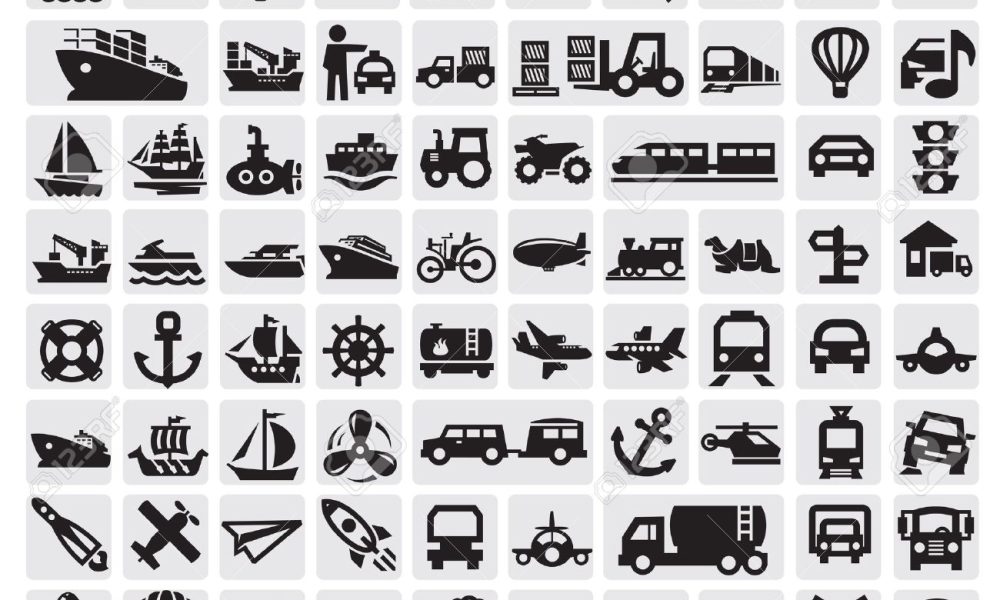Explore the world of transport icons in this comprehensive article. Learn about their significance, history, and how they impact our daily lives.
Transport icons have become an integral part of modern society. These symbols, often overlooked, play a crucial role in conveying information and ensuring smooth navigation in various transportation systems. In this article, we will delve into the world of transport icons, shedding light on their significance, history, and practical applications. Let’s embark on this journey together and discover the fascinating realm of transport icons.
Introduction
Transportation is a fundamental aspect of our daily lives, and icons are the unsung heroes that make it all work seamlessly. From road signs to navigation apps, transport icons provide us with essential information that guides our movements and keeps us safe. In this article, we will explore the intricate world of transport icons, from their origins to their modern-day applications.
The Significance of Transport Icons
Transport icons are more than just symbols; they are a universal language that transcends barriers of culture and language. These icons convey crucial information to road users, travelers, and commuters, ensuring everyone understands the rules of the road and navigational instructions.
The Language of Icons
Icons are a visual language that speaks to our subconscious. They communicate complex concepts quickly and efficiently, making them an indispensable tool in the world of transportation. From traffic lights to pedestrian crossing symbols, transport icons are designed for instant recognition.
Enhancing Safety
One of the primary purposes of transport icons is to enhance safety. Road signs, for example, warn us of potential dangers ahead, such as sharp turns, intersections, and pedestrian crossings. Without these icons, navigating our roads would be far more hazardous.
Simplifying Navigation
In the age of GPS and navigation apps, icons play a significant role in simplifying navigation. Whether you’re driving through unfamiliar territory or trying to catch a bus in a new city, icons on maps and signposts guide the way.
The History of Transport Icons
To truly appreciate the role of transport icons today, we must delve into their rich history. These icons have evolved over centuries to become the concise symbols we know today.
Ancient Roots
The use of symbols to convey information is as old as human civilization itself. Ancient road networks often featured rudimentary symbols to guide travelers and traders. These early icons laid the foundation for the transport icons we use today.
The Modern Era
The modern era saw a significant leap in the development of transport icons. With the rise of the automobile and the need for standardized road signage, organizations like the International Road Congress began to establish a universal set of symbols. These efforts culminated in the creation of the Vienna Convention on Road Signs and Signals in 1968, which standardized road signs and transport icons worldwide.
Applications of Transport Icons
Transport icons are omnipresent in our daily lives, yet we often take them for granted. Let’s explore how these icons are used in various transportation systems and applications.
Road Signs
Road signs are perhaps the most familiar application of transport icons. They guide drivers, cyclists, and pedestrians, providing information about speed limits, hazards, and directions.
Public Transportation
Icons are also integral to public transportation systems. From subway maps to bus schedules, these symbols make it easy for commuters to understand routes and destinations.
Aviation
Even in the skies, transport icons play a vital role. Aviation uses icons to convey information to pilots, air traffic controllers, and passengers, ensuring safe and efficient air travel.
Digital Navigation
In the digital age, transport icons have found a new home in navigation apps. Icons on our smartphones guide us with turn-by-turn directions, making travel more accessible than ever.
FAQs (Frequently Asked Questions)
What are LSI Keywords, and why should they be used in headings?
LSI Keywords, or Latent Semantic Indexing Keywords, are words or phrases related to the main keyword. Using them in headings helps improve SEO by making the content more contextually relevant and valuable to readers.
How do transport icons benefit road safety?
Transport icons enhance road safety by providing clear and universally understood information to all road users, reducing the likelihood of accidents and misunderstandings.
Can you explain the significance of the Vienna Convention on Road Signs and Signals?
The Vienna Convention standardized road signs and transport icons internationally, ensuring that travelers worldwide can understand and follow traffic regulations, contributing to safer and more efficient transportation.
Are transport icons used in maritime navigation?
Yes, transport icons are also used in maritime navigation. They appear on nautical charts and aids to navigation, helping sailors safely navigate oceans and waterways.
Do all countries use the same transport icons?
While many countries follow the Vienna Convention’s guidelines, some may have variations in transport icons. However, the core symbols are generally consistent worldwide.
How can I design effective transport icons for my transportation-related project?
Designing effective transport icons requires a deep understanding of the target audience and the message you want to convey. It’s essential to keep icons simple, intuitive, and easily recognizable.
Conclusion
Transport icons are the unsung heroes of our daily journeys. They simplify navigation, enhance safety, and ensure that we reach our destinations smoothly. From ancient symbols to modern digital icons, these visual cues are an integral part of our transportation systems. So, the next time you hit the road or board a plane, take a moment to appreciate the silent guidance of transport icons.
